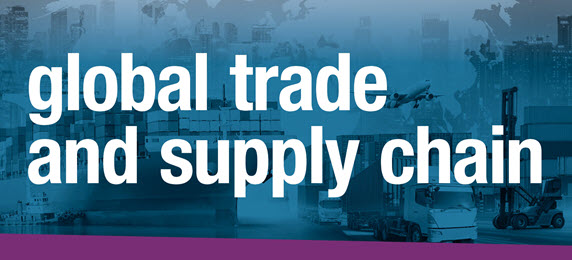
September 20, 2024
Auto Care Association Urges Swift Action to Prevent Devastating Port Strike as Deadline Nears
Last week, the Auto Care Association joined more than 170 industry groups representing industries across the U.S. to urge President Biden to work with both sides of the ongoing labor negotiations between the United States Maritime Alliance (USMX) and the International Longshoremen’s Association (ILA) to prevent a potential strike at ports along the East Coast and Gulf of Mexico.
The ILA, representing 85,000 dockworkers (longshoremen), is threatening to strike on Oct. 1 following a six-year contract if the parties do not come to an agreement in meeting their demands for significantly higher wages and a ban on the automation of cranes, gates and container movements that are used in the loading of freight at 36 U.S. ports, including New York, New Jersey, Houston and Savannah.
ILA President Harold Daggett has stated that the union will not agree to an extension once the current contract expires. More than 68% of all containerized exports and more than 56% of containerized imports flow through East and Gulf Coast ports, representing an average daily trade value of more than $2.1 billion (National Association of Manufacturers).
“With the potential to impact more than four million automotive aftermarket industry jobs, a halt in port operations would delay the delivery of critical auto parts, leading to shortages that could severely hinder vehicle repairs and maintenance across the country (source: 2025 Auto Care Factbook). This disruption would directly affect businesses, workers, and millions of consumers who depend on timely access to automotive services, with far-reaching economic consequences,” says Bill Hanvey, president and CEO, Auto Care Association. “A prolonged strike would strain the supply chain, making it difficult for repair shops and distributors to meet demand. We urge immediate action to safeguard the seamless flow of goods that is essential to the industry and the broader economy.”
Some ports are evaluating or have implemented contingency plans, including staying open for business on weekends and extending regular work hours. West Coast ports are seeing a surge in imports as retailers and manufacturers rush to reroute goods in anticipation of potential disruptions and ahead of the increased Section 301 tariffs on imports from China on steel, aluminum, solar panels and more.
The letter referenced the administration’s previous success in helping to resolve the West Coast port labor dispute as an example of the role the government can play in avoiding disruption in port operations and the flow of goods. However, the administration has stated that it wants to “encourage all parties to remain at the bargaining table and negotiate in good faith” and is not considering invoking the Taft-Harley Act to break a strike.
With just two weeks remaining until the ILA-USMX contract expires, the letter calls on the Biden administration to engage with both parties to swiftly negotiate a new deal or agree to continue negotiations while keeping the ports open and cargo flowing.
Read the Coalition Letter
The ILA, representing 85,000 dockworkers (longshoremen), is threatening to strike on Oct. 1 following a six-year contract if the parties do not come to an agreement in meeting their demands for significantly higher wages and a ban on the automation of cranes, gates and container movements that are used in the loading of freight at 36 U.S. ports, including New York, New Jersey, Houston and Savannah.
ILA President Harold Daggett has stated that the union will not agree to an extension once the current contract expires. More than 68% of all containerized exports and more than 56% of containerized imports flow through East and Gulf Coast ports, representing an average daily trade value of more than $2.1 billion (National Association of Manufacturers).
“With the potential to impact more than four million automotive aftermarket industry jobs, a halt in port operations would delay the delivery of critical auto parts, leading to shortages that could severely hinder vehicle repairs and maintenance across the country (source: 2025 Auto Care Factbook). This disruption would directly affect businesses, workers, and millions of consumers who depend on timely access to automotive services, with far-reaching economic consequences,” says Bill Hanvey, president and CEO, Auto Care Association. “A prolonged strike would strain the supply chain, making it difficult for repair shops and distributors to meet demand. We urge immediate action to safeguard the seamless flow of goods that is essential to the industry and the broader economy.”
Some ports are evaluating or have implemented contingency plans, including staying open for business on weekends and extending regular work hours. West Coast ports are seeing a surge in imports as retailers and manufacturers rush to reroute goods in anticipation of potential disruptions and ahead of the increased Section 301 tariffs on imports from China on steel, aluminum, solar panels and more.
The letter referenced the administration’s previous success in helping to resolve the West Coast port labor dispute as an example of the role the government can play in avoiding disruption in port operations and the flow of goods. However, the administration has stated that it wants to “encourage all parties to remain at the bargaining table and negotiate in good faith” and is not considering invoking the Taft-Harley Act to break a strike.
With just two weeks remaining until the ILA-USMX contract expires, the letter calls on the Biden administration to engage with both parties to swiftly negotiate a new deal or agree to continue negotiations while keeping the ports open and cargo flowing.
Read the Coalition Letter

Angela Chiang, Director, International Affairs
Doing business across borders can be tough, especially now. My work centers around helping you explore new and emerging markets, finding new business partners and navigating trade policy. More About Me

As trade policies are updated and supply chain challenges continue, this section provides the latest information on how your business can navigate the changes.
More posts
Latest related
Content
-
[WATCH] 2022 Business Outlook: Top Emerging Opportunities and Challenges
February 4, 2022This webinar explores need-to-know emerging opportunities and challenges for the coming year: current status of supply chain issues and what to expect in the year ahead and more.
-
[REPORT] 2022 Auto Care Factbook
May 6, 2021The only publication of its kind, this report includes data on light vehicle sales volume for key aftermarket product categories, sales percentage growth, light vehicle product growth and much more.
Visit
